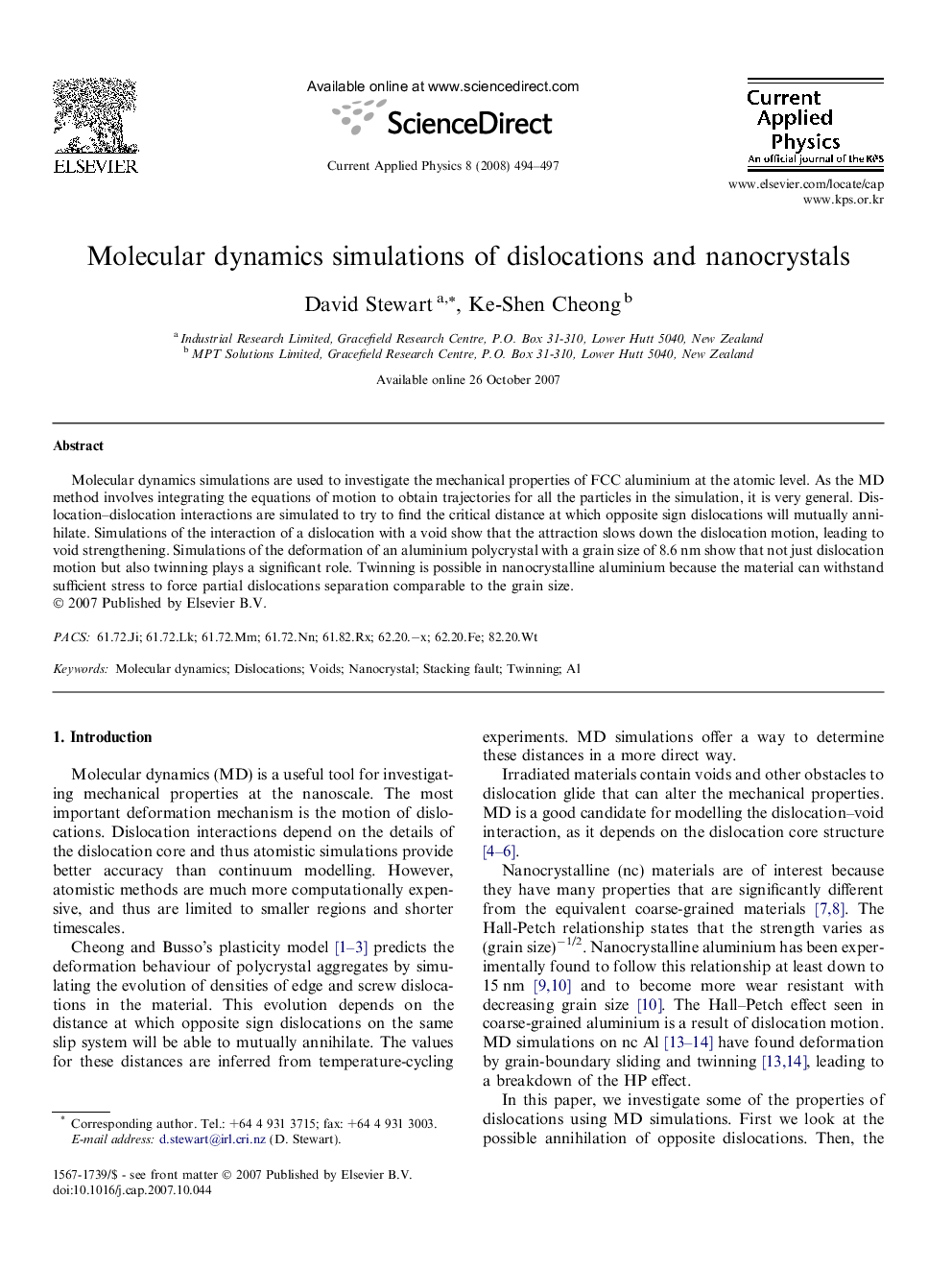| Article ID | Journal | Published Year | Pages | File Type |
|---|---|---|---|---|
| 1788527 | Current Applied Physics | 2008 | 4 Pages |
Molecular dynamics simulations are used to investigate the mechanical properties of FCC aluminium at the atomic level. As the MD method involves integrating the equations of motion to obtain trajectories for all the particles in the simulation, it is very general. Dislocation–dislocation interactions are simulated to try to find the critical distance at which opposite sign dislocations will mutually annihilate. Simulations of the interaction of a dislocation with a void show that the attraction slows down the dislocation motion, leading to void strengthening. Simulations of the deformation of an aluminium polycrystal with a grain size of 8.6 nm show that not just dislocation motion but also twinning plays a significant role. Twinning is possible in nanocrystalline aluminium because the material can withstand sufficient stress to force partial dislocations separation comparable to the grain size.
